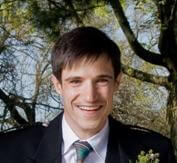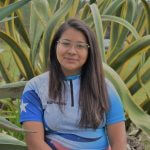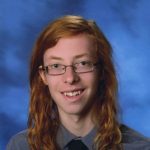2019 Board of Directors Elections – Candidates for Four Open Seats
The 2019 OUSA Annual General Meeting will be held on Saturday, Sept. 7, at Cabrillo College in Aptos, California, south of San Francisco. The AGM is being held in conjunction with the U.S. Nationals hosted by the Bay Area Orienteering Club. The meeting will begin at 4:00 p.m., and club delegate check-in will start at 3:00 p.m at the Cabrillo College Cafeteria. More details on exact location on campus will be added when available.
At that meeting, there will be voting for four openings on the OUSA Board of Directors, replacing current board members whose terms are ending this year: Kris Beecroft, Alex Jospe, Pat Meehan, and Barbara Bryant..
Currently there are four candidates, but more may arise prior to the end of August. Also, candidates can be nominated from the floor at the AGM (with approval of the nominee). Short resumes from the four current candidates follow (updated Aug 17 to add Jon Torrance):
Victoria (Tori) Campbell
Currently a member of NEOC, UNO and COC
www.linkedin.com/m/vjhcampbell/
I am running for a position on the OUSA Board of Directors because I love orienteering and want to help more people to enjoy it. My first orienteering adventure was in 1996, and I’ve been orienteering regularly since 2001. Over the years my husband, Jon, and I have been members of COC, CSU, NEOC, QOC, and USMAOC, and visited many other clubs through our travels. I’ve learned to appreciate how clubs can share the same love of orienteering, but have unique environments and needs. I welcome the challenge of developing solutions that move orienteering forward while providing flexibility across our diverse membership.
I believe I will be effective as a Board member because I have extensive long- and short-term planning experience from 20+ years as an Army officer. I enjoy making sense of information, developing plans to meet an objective, and collaborating with others. I see my candidacy as focused more on supporting effective processes than trying to achieve any particular personal goal, because I recognize that OUSA is volunteer-led and significant advances are only possible when a core group is willing to pour their passion into making something happen. Regardless of whether an idea is one I am personally passionate about, if “movers and shakers” want to advance an idea aligned with OUSA’s strategic plan, I want to support their efforts and see what we can accomplish.
Besides collaboration and teamwork at the organizational level, my interests in orienteering include putting on top-notch competitions; making well-reasoned decisions about who should represent the U.S. in international competitions and encouraging those who dedicate time and effort to train for such events; advancing family-friendly events; teaching and coaching orienteering; and orienteering in education. I hope you will support my candidacy and I look forward to the opportunity to give back to an organization that has given me so much over the years!
Clai Gardner
I have orienteered since 1980 and I am a lifetime U.S. Orienteering member. I really love orienteering.
• Club leadership: Lone Star Orienteering Club founder and current president
• U.S. Military Orienteering team member at CISM World Championships 1994 and 1997
• Geographic Information Systems Master’s Program Training
• Assisted in organizing numerous national orienteering events
My planned focus if elected as a BOD member:
• Facilitate map production
• You cannot play baseball without baseball fields and you can’t orienteer without maps, so I will facilitate map production
• Facilitate map production so we can involve more youth participation
• Listen to suggestions that will help facilitate map production
• Assist clubs in partnering with universities, community colleges, and all levels of education that have access to GIS software to produce maps
Joseph Huberman
I believe that the Clubs form the foundation of Orienteering. A Club event is where new people are introduced to Orienteering. Without a vibrant community of clubs, potential world class orienteers will never even try our sport.
OUSA membership represents only a small fraction of the active orienteers who participate at the club level. In order for OUSA to involve many more recreational orienteers, OUSA must provide services to the clubs at the local level that will make hosting orienteering events easier for the club’s volunteers and more convenient for the recreational orienteer.
I believe that the OUSA website should become a central location for recreational and competitive orienteers to learn about, register, and pay for events at both the national and club level. This should be accomplished by offering incentives and free services to the clubs to facilitate event registering, results, and reporting. OUSA would then shoulder many of the unrewarding bureaucratic jobs freeing club volunteers to focus on the fun parts of hosting events. Bringing OUSA down to the grassroots club level will increase its relevance and attract more national memberships.
With my decades of experience leading my club and directing both local and national events I believe I can advocate for the recreational club perspective on the OUSA BOD so that more recreational orienteers will become part of OUSA and transition to competitors at the national level.
I have been orienteering since 1978 and the president of Backwoods Orienteering Klub since 1980, shortly after its founding in 1978 when we had only 8 members.
I served as USOF Rules Committee Chairman during the years we were modifying our rules to conform with the IOF rules. I have been Event Director for (at least) 10 National Events including: a fundraiser in cooperation with the US Senior team, Long O Champs, Relay Champs, Classic Champs, Interscholastic and Intercollegiate Champs as well as ARDF US & Region II Champs (radio orienteering) and two International Training Camps. My breadth of experience will serve the BOD well.
Jon Torrance
Currently a member of QOC and OOC (Ottawa Orienteering Club)
After starting orienteering in spring 1990 — not counting a couple of high school gym excursions (thanks alma mater no one reading this would have heard of, and also to TV Ontario for once showing the short film “Thomas the Orienteer” when I was channel surfing as an adolescent, and to Hal Higdon for featuring orienteering in the plot of his novel ”The Electronic Olympics”) — I moved from Canada to the DC area for work in 1997; since that time I’ve been an active member of Quantico Orienteering Club.
Within QOC, I’ve:
- directed a handful of local events
- set courses for a much, much larger number of local events
- served as club secretary
- won the club’s Volunteer of the Year award in 2006
- fieldchecked and drafted a handful of maps on a volunteer basis, two of which were then used for a national meet
- served from 2010 to 2014 as club president, during which years the club grew local event starts from between 2100 and 2500 in 2005–2009 to more than 4000 in each year of 2012–2014, while membership more or less doubled compared to 2007–2009 (somewhat less than doubled compared to 2005 and 2006). Not, in my opinion, due to my brilliant leadership — I give most of the credit to a major revamp of the QOC web site, in which I took some part, boosted by other publicity efforts — but apparently my leadership wasn’t bad enough to prevent breakneck growth given otherwise favorable conditions.
- served as chief vetter for two U.S. Classic Championships
- created the basemap for, fieldchecked, and drafted a new map of a longtime QOC venue for pay in 2018
- served as event director for national meets held in 2014 and 2019, both including national championship races
Outside QOC, I’ve had an elite orienteering career including several years in the Canadian High Performance Program, running on the Canadian WOC team from 2005 through 2010, and winning 4 elite Canadian Championship medals, and the APOC 2006 long distance championship. And in 2016, I spent the summer mapping professionally in Canada, fieldchecking and drafting two maps for OOC, including the forest map used for the 2017 Canadian Middle and Long Distance Champs.
That has probably sufficiently established that I’m a useful person to have around if you want lots of orienteering and if I could be cloned in quantity, every U.S. club would want one of me. Regarding my current desire to serve on the OUSA board, after a few years now of competitive elections for and apparent new energy within the OUSA board, I was disappointed to see initially only 3 candidates announced for 4 available seats on the board. I think the board has recently been doing a generally decent job keeping the lights on and has been working on some promising initiatives to identify and spread best practices at the club level, where the rubber meets the road in any effort to sustain let alone grow orienteering nationally. If there aren’t four other new people out there eager to work on furthering those initiatives, I’m not currently committed to direct any upcoming national meets so I’m available. And since a reliably abundant supply of orienteering throughout North America for me to enjoy during the rest of my lifetime is probably riding on the success of those initiatives, fervently willing.
Which said, just because there are now, including me, (at least) 4 candidates for 4 open seats, doesn’t, in my view, mean everyone should relax. If any OUSA member reading this thinks they have as much to contribute or more as any of the candidates currently running, I encourage them to throw their hat into the ring. And if you don’t win this time, try again in the future, other commitments permitting. We should aspire to have competitive OUSA board elections and a vibrant, growing OUSA now and indefinitely into the future.




